Machine tool is a machine that processes metal blanks into machine parts. It is a machine that makes machines, so it is also called “mother machine” or “tool machine”. It is conventionally referred to as machine tool. What are the categories of machine tools?
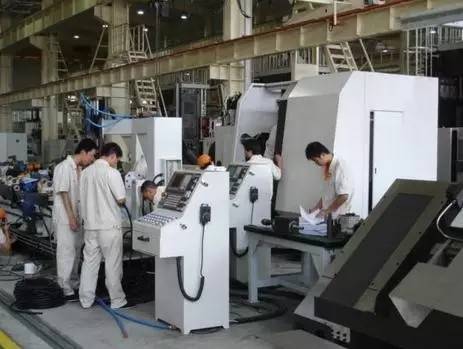
There are many ways to process mechanical parts in modern machinery manufacturing: in addition to cutting, there are casting, forging, welding, stamping, extrusion, etc. but for parts with higher accuracy and finer surface roughness, they generally need to be processed by cutting on the machine tool. In general machine manufacturing, the processing workload of machine tools accounts for 40% – 60% of the total machine manufacturing workload. Machine tools play an important role in the construction of national economic modernization.
Machine tools are mainly classified according to the processing methods and tools used. According to the national machine tool model compilation method, machine tools are divided into 11 categories: lathe, drilling machine, boring machine, grinder, gear processing machine, thread processing machine, milling machine, planer, broaching machine, sawing machine and other machine tools. In each type of machine tool, it is divided into several groups according to the process scope, layout type and structural performance, and each group is divided into several series. Let’s talk about some lathes.
First: Lathe
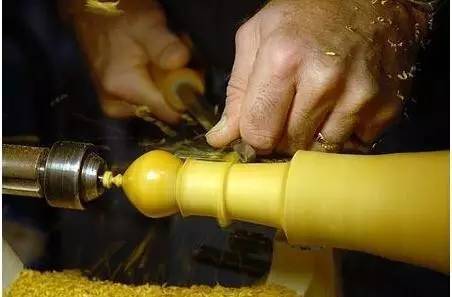
Lathe is a machine tool mainly used for turning the rotating workpiece. In the lathe can also be used to drill, reamer, reamer, tap, die and knurling tools for the corresponding processing. Lathe is mainly used to process shaft, disc, sleeve and other workpieces with rotary surface. It is the most widely used machine tool in machinery manufacturing and repair factory.
1. Ancient pulley, bow bar “bow lathe” as early as in ancient Egypt, people have invented the technology of turning wood around its central axis with a tool. At first, people used two standing trees as supports to set up the wood to be turned. The elastic force of the branches was used to roll the rope onto the wood. The rope was pulled by hand or foot to turn the wood, and the cutting tool was held in hand.
This ancient method gradually evolved into winding two or three circles of rope on the pulley. The rope is supported on an elastic rod bent into an arch, and the bow is pushed and pulled back and forth to make the processed object rotate, thus turning. This is called “bow lathe”.
2. In the middle ages, someone designed a “pedal lathe” which uses the pedal to rotate the crankshaft and drive the flywheel, and then drives it to the spindle to make it rotate. In the middle of the 16th century, a French designer named Besson designed a lathe for turning screws with a screw rod to make the cutter slide. Unfortunately, this kind of lathe was not widely used.
3. The headstock and chuck were born in the 18th century. In the 18th century, someone designed a kind of lathe that uses pedal and connecting rod to rotate the crankshaft, which can store the rotational kinetic energy on the flywheel. The headstock was developed from directly rotating the workpiece to rotating the headstock. The headstock is a chuck used to clamp the workpiece.
4. In 1797, mozley, an Englishman, invented the epoch-making tool rest lathe with precision guide screw and interchangeable gears.
Mozley was born in 1771. At the age of 18, he was the right-hand man of the inventor Brammer. It is said that Brammer had always been a farmer. When he was 16 years old, he had to switch to carpentry because of an accident that disabled his right ankle. His first invention was the toilet in 1778. Mozley began to help Brammer design the hydraulic press and other machinery. He didn’t leave Brammer until he was 26 years old, because Brammer rudely rejected his request to increase his salary to more than 30 shillings a week.
In the year mozley left Brammer, he built the first screw lathe, an all metal lathe with a tool holder and tailstock that moved along two parallel rails. The guide surface of the guide rail is triangular. When the spindle rotates, it drives the lead screw to make the tool holder move laterally. This is the main mechanism of modern lathes, which can be used to turn precision metal screws with any pitch.
Three years later, mozley built a more perfect lathe in his own workshop. The gears on the lathe can be replaced with each other, and the feed speed and pitch of the thread can be changed. In 1817, another Englishman, Roberts, adopted a four stage belt pulley and back wheel mechanism to change the spindle speed. Soon, larger lathes came out, which made great contributions to the invention of steam engine and other machines.
5. The birth of various special lathes in order to improve the degree of mechanization and automation, in 1845, Fitch of the United States invented the turret lathe; in 1848, there appeared the return wheel lathe in the United States; in 1873, Spencer of the United States made a single axis automatic lathe, and soon he made a three axis automatic lathe; in the early 20th century, there appeared a lathe with a gear box driven by a single motor. Due to the invention of high-speed tool steel and the application of motor, the lathe has been continuously improved and finally reached the modern level of high speed and high precision.
After the first World War, due to the needs of arms, automobile and other machinery industries, various high-efficiency automatic lathes and specialized lathes developed rapidly. In order to improve the productivity of small batch workpieces, in the late 1940s, the lathe with hydraulic profiling device was promoted, at the same time, the multi tool lathe was also developed. In the middle of 1950s, the program control lathe with punch card, pin plate and dial plate was developed. Numerical control technology began to be used in lathe in 1960s, and developed rapidly after 1970s.
6. Lathes can be divided into many types according to their uses and functions.
The common lathe has a wide range of processing objects, a wide range of spindle speed and feed adjustment, and can process the internal and external surfaces, end faces and internal and external threads of the workpiece. This kind of lathe is mainly operated by manual workers with low production efficiency. It is suitable for single piece, small batch production and repair workshop.
Turret lathe and turret lathe are equipped with turret turret or return wheel turret which can hold multiple cutters. Workers can use different cutters to complete a variety of processes in one clamping process, which is suitable for batch production.
The automatic lathe can automatically complete the multi process processing of small and medium-sized workpieces according to a certain program. It can automatically load and unload materials and repeatedly process a batch of the same workpieces. It is suitable for mass production.
Multi Tool semi-automatic lathe can be divided into single axis, multi axis, horizontal and vertical. The layout of single shaft horizontal lathe is similar to that of ordinary lathe, but the two sets of turrets are respectively installed in the front and back or up and down of the spindle, which are used to process disc, ring and shaft workpieces, and the productivity is 3-5 times higher than that of ordinary lathe.
The copying lathe can imitate the shape and size of the template or sample, and automatically complete the processing cycle of the workpiece. It is suitable for small batch and batch production of the workpiece with complex shape. The productivity is 10-15 times higher than that of the ordinary lathe. There are multi turret, multi axis, chuck type, vertical and other types.
The spindle of the vertical lathe is perpendicular to the horizontal plane, the workpiece is clamped on the horizontal rotary table, and the tool rest moves on the beam or column. It is suitable for machining larger, heavier workpieces which are difficult to install on ordinary lathe. It is generally divided into single column and double column.
In the process of turning, the tool rest of the relief lathe moves back and forth in the radial direction periodically, which is used to form the tooth surface of the forklift milling cutter and hob. Usually with grinding accessories, a small grinding wheel driven by a separate motor is used to grind the tooth surface.
Special lathes are used to process specific surfaces of certain types of workpieces, such as crankshaft lathes, camshaft lathes, wheel lathes, axle lathes, roll lathes and ingot lathes.
The combined lathe is mainly used for turning, but after adding some special parts and accessories, it can also be used for boring, milling, drilling, inserting, grinding and other processing. It has the characteristics of “one machine with multiple functions”, and is suitable for repair work on engineering vehicles, ships or mobile repair stations.
Second: Boring machine
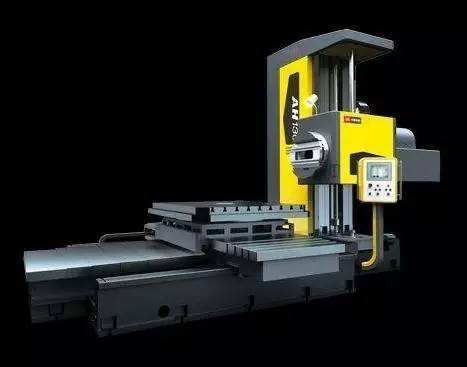
1. The earliest boring machine designer, Da Vinci boring machine, is known as the “mother of machinery”. When it comes to boring machines, we have to talk about Da Vinci first. This legendary figure may be the designer of the first boring machine for metal processing. The boring machine designed by him is powered by water or foot pedal. The boring tool rotates close to the workpiece, and the workpiece is fixed on the mobile platform driven by crane. In 1540, another painter painted a painting of pyrotechnics, which also had the same boring machine drawing. At that time, the boring machine was specially used for finishing hollow castings.
2. The first boring machine (Wilkinson, 1775) was born for the processing of artillery barrel. In the 17th century, due to the military needs, the development of artillery manufacturing industry is very rapid. How to manufacture the artillery barrel has become a big problem that people need to solve.
The first real boring machine in the world was invented by Wilkinson in 1775. In fact, to be exact, Wilkinson’s boring machine is a kind of drilling machine that can precisely process artillery. It is a kind of hollow cylindrical boring bar, with both ends mounted on bearings.
Wilkinson was born in the United States in 1728. At the age of 20, he moved to Staffordshire and built the first ironmaking furnace in Bilston. Therefore, Wilkinson is called “master blacksmith of Staffordshire”.
In 1775, Wilkinson, 47 years old, worked hard in his father’s factory and finally made this new machine, which can drill the barrel of cannon with rare precision. Interestingly, after Wilkinson died in 1808, he was buried in a cast iron coffin of his own design.
3. Boring machine made an important contribution to Watt’s steam engine. If there were no steam engine, the first wave of industrial revolution would not have appeared at that time. The development and application of steam engine itself, in addition to the necessary social opportunities, some technical preconditions can not be ignored, because the manufacturing of steam engine parts is far from as easy as the carpenter cutting wood, to make metal into some special shapes, and the processing accuracy requirements are high, without the corresponding technical equipment is impossible. For example, in the manufacture of steam engine cylinders and pistons, the accuracy of the outer diameter required in the piston manufacturing process can be measured and cut from the outside, but it is not easy to meet the accuracy requirements of the inner diameter of the cylinder by using general processing methods.
Smitten was the best mechanic of the eighteenth century. 43 pieces of windmill design. In the production of steam engine, the most difficult thing for Smeaton is to process the cylinder. It is very difficult to machine a large cylinder into a circle. Therefore, Smeaton made a special machine tool for cutting cylinder inner circle in Karen iron factory. This kind of boring machine, driven by water wheel, is equipped with a cutter at the front end of its long shaft. The cutter can rotate in the cylinder, so that its inner circle can be machined. Because the cutter is installed at the front end of the long shaft, the deflection of the shaft will appear, so it is very difficult to machine a real round cylinder. Therefore, Smeaton had to change the position of the cylinder for many times.
The boring machine invented by Wilkinson in 1774 played an important role in this problem. This kind of boring machine uses water wheel to make the material cylinder rotate, and make it move towards the fixed cutter in the center. Due to the relative movement between the cutter and the material, the material is bored into a cylindrical hole with high accuracy. At that time, the boring machine was used to make a cylinder with a diameter of 72 inches, and the error was not more than the thickness of a sixpence coin. Judging by modern technology, this is a big error, but under the conditions at that time, it is not easy to reach this level.
However, Wilkinson’s invention has not applied for patent protection, people have copied it and installed it. In 1802, Watt also talked about Wilkinson’s invention in his book and imitated it in his SOHO iron factory. Later, when watt made the cylinder and piston of steam engine, he also used Wilkinson’s magical machine. Originally, for the piston, it is possible to measure the size on the outside and cut at the same time, but for the cylinder, it is not so simple, so it is necessary to use a boring machine. At that time, Watt used the water wheel to make the metal cylinder rotate, so that the tool with a fixed center was pushed forward to cut the inside of the cylinder. As a result, the error of the cylinder with a diameter of 75 inches was less than the thickness of a coin, which was very advanced at that time.
4. Worktable lifting boring machine was born (Hutton, 1885). In the following decades, Wilkinson’s boring machine was improved a lot. In 1885, Hutton of England made the table lifting boring machine, which has become the prototype of modern boring machine.
Third: Milling machine

In the 19th century, the British invented boring machine and planer for the needs of industrial revolution such as steam engine, while the Americans devoted themselves to the invention of milling machine in order to produce a large number of weapons. Milling machine is a kind of machine with milling cutters of different shapes. It can cut workpieces of special shapes, such as spiral groove, gear shape, etc.
As early as 1664, Huck, a British scientist, made a kind of machine for cutting by using a rotary circular cutter, which can be regarded as the original milling machine. However, at that time, there was no enthusiastic response from the society. In the 1840s, Pratt designed the so-called Lincoln milling machine. Of course, the real establishment of milling machine in machine manufacturing status, to count the American Whitney.
1. The first ordinary milling machine (Whitney, 1818) in 1818, Whitney made the first ordinary milling machine in the world. However, the patent of milling machine was obtained by British Bodmer in 1839. Due to the high cost of milling machine, there were not many people interested in it at that time.
2. The first universal milling machine (brown, 1862) became active again in the United States after a period of silence. In contrast, Whitney and Pratt can only say that they laid the foundation for the invention and application of milling machine. The real achievement of inventing milling machine suitable for all kinds of factory operations should belong to American engineer Joseph brown.
In 1862, brown of the United States produced the world’s first universal milling machine. This kind of milling machine is an epoch-making pioneering work in the field of equipped with universal dividing disc and comprehensive milling cutter. The worktable of universal milling machine can rotate a certain angle in the horizontal direction, and it has end milling head and other accessories. His universal milling machine was a great success when it was exhibited at the Paris Exposition in 1867. At the same time, Brown also designed a form milling cutter that will not deform after grinding, and then made a grinder to grind the milling cutter, making the milling machine reach the present level.
Forth: Planer
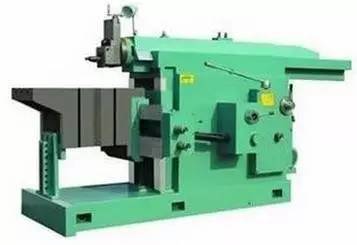
In the process of invention, many things are often complementary and closely linked: in order to make the steam engine, boring machine is needed; after the invention of steam engine, from the process requirements, gantry planer is called again. It can be said that it is the invention of steam engine that leads to the development of “machine tool” from boring machine and lathe to planer. In fact, planer is a kind of metal planer.
1. Gantry planer for machining large plane (1839) due to the need of plane machining of steam engine seat, many technicians began to study this aspect from the beginning of the 19th century, including Richard Robert, Richard Platt, James Fox and Joseph clement. They independently manufactured the dragon in 25 years from 1814 Door planer. This kind of planer is used to fix the processed object on the platform, and the planer cuts one side of the processed object. However, this kind of planer has no tool feeding device and is in the process of transforming from “tool” to “machine”. In 1839, a British man named Bodmer finally designed a planer with a knife feeding device.
2. Another Englishman, Nesmith, invented and manufactured the shaping machine for machining small plane in 40 years from 1831. It can fix the workpiece on the bed and move the cutter back and forth.
Since then, due to the improvement of tools and the emergence of motors, the gantry planer has developed towards high-speed cutting and high-precision on the one hand, and large-scale on the other.
Fifth: Grinding machine
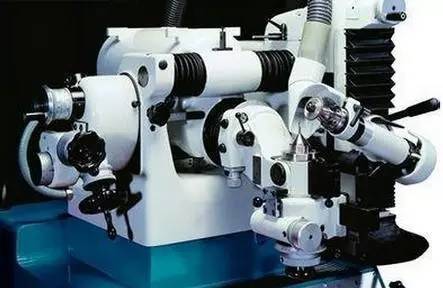
Grinding is an ancient technology known by human beings since ancient times. In the Paleolithic age, it was used to grind stone tools. Later, with the use of metal appliances, it promoted the development of grinding technology. However, the design of well-known grinding machinery is still a modern thing. Even in the early 19th century, people still made grinding by rotating the natural grinding stone to make it contact the processing object.
1. The first grinder (1864) in 1864, the United States made the world’s first grinder, this is the carriage of the lathe equipped with grinding wheel, and it has an automatic transmission device. After 12 years, American Brown invented the universal grinder which is close to the modern grinder.
2. Artificial grindstone — the birth of grinding wheel (1892), the demand for artificial grindstone also rose. How to develop grindstone which is more wear-resistant than natural grindstone? In 1892, American Acheson successfully trial produced silicon carbide made of coke and sand, which is a kind of artificial grinding stone now called C abrasive. Two years later, a abrasive with alumina as the main component was successfully trial produced. In this way, the grinder was more widely used.
Later, due to the further improvement of the bearing and guide rail, the accuracy of the grinder is getting higher and higher, and it is developing towards the direction of specialization. There are internal grinder, surface grinder, roller grinder, gear grinder, universal grinder and so on.
Post time: Jan-06-2021
